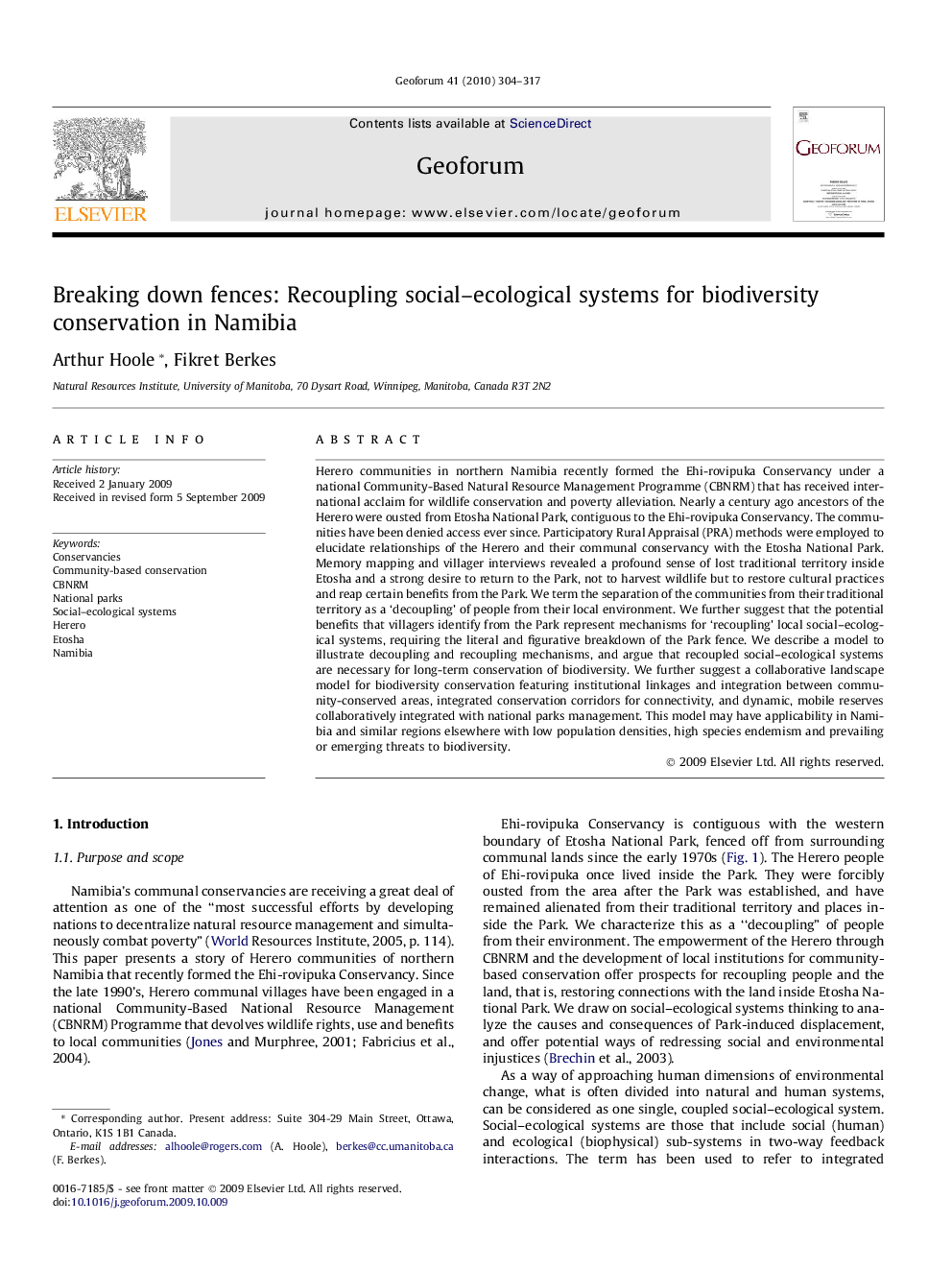| کد مقاله | کد نشریه | سال انتشار | مقاله انگلیسی | نسخه تمام متن |
|---|---|---|---|---|
| 5074694 | 1373711 | 2010 | 14 صفحه PDF | دانلود رایگان |
عنوان انگلیسی مقاله ISI
Breaking down fences: Recoupling social-ecological systems for biodiversity conservation in Namibia
دانلود مقاله + سفارش ترجمه
دانلود مقاله ISI انگلیسی
رایگان برای ایرانیان
کلمات کلیدی
موضوعات مرتبط
علوم انسانی و اجتماعی
اقتصاد، اقتصادسنجی و امور مالی
اقتصاد و اقتصادسنجی
پیش نمایش صفحه اول مقاله

چکیده انگلیسی
Herero communities in northern Namibia recently formed the Ehi-rovipuka Conservancy under a national Community-Based Natural Resource Management Programme (CBNRM) that has received international acclaim for wildlife conservation and poverty alleviation. Nearly a century ago ancestors of the Herero were ousted from Etosha National Park, contiguous to the Ehi-rovipuka Conservancy. The communities have been denied access ever since. Participatory Rural Appraisal (PRA) methods were employed to elucidate relationships of the Herero and their communal conservancy with the Etosha National Park. Memory mapping and villager interviews revealed a profound sense of lost traditional territory inside Etosha and a strong desire to return to the Park, not to harvest wildlife but to restore cultural practices and reap certain benefits from the Park. We term the separation of the communities from their traditional territory as a 'decoupling' of people from their local environment. We further suggest that the potential benefits that villagers identify from the Park represent mechanisms for 'recoupling' local social-ecological systems, requiring the literal and figurative breakdown of the Park fence. We describe a model to illustrate decoupling and recoupling mechanisms, and argue that recoupled social-ecological systems are necessary for long-term conservation of biodiversity. We further suggest a collaborative landscape model for biodiversity conservation featuring institutional linkages and integration between community-conserved areas, integrated conservation corridors for connectivity, and dynamic, mobile reserves collaboratively integrated with national parks management. This model may have applicability in Namibia and similar regions elsewhere with low population densities, high species endemism and prevailing or emerging threats to biodiversity.
ناشر
Database: Elsevier - ScienceDirect (ساینس دایرکت)
Journal: Geoforum - Volume 41, Issue 2, March 2010, Pages 304-317
Journal: Geoforum - Volume 41, Issue 2, March 2010, Pages 304-317
نویسندگان
Arthur Hoole, Fikret Berkes,